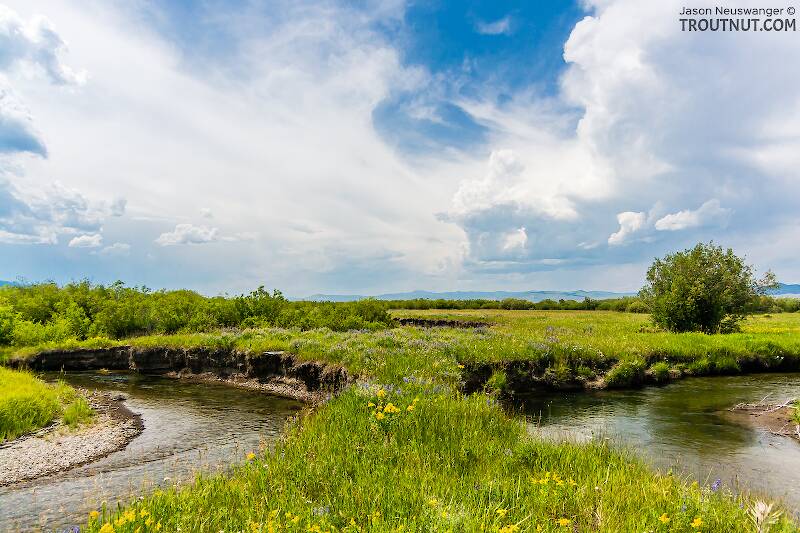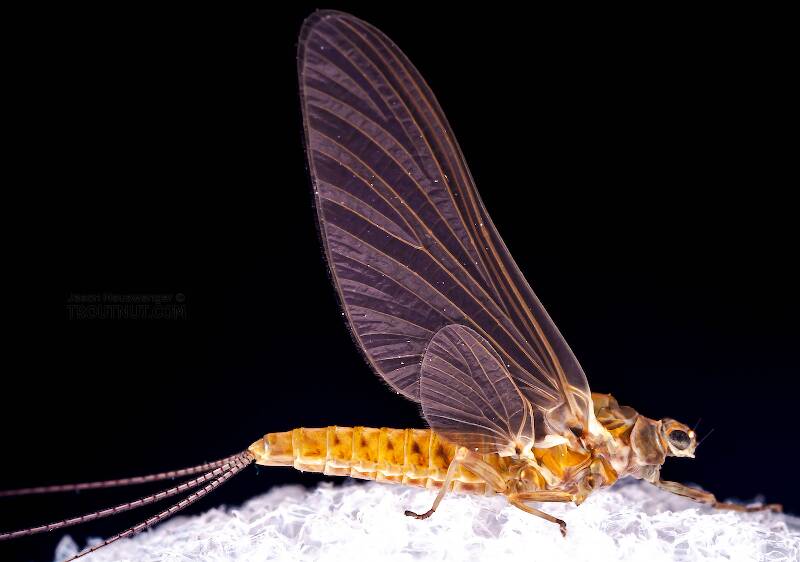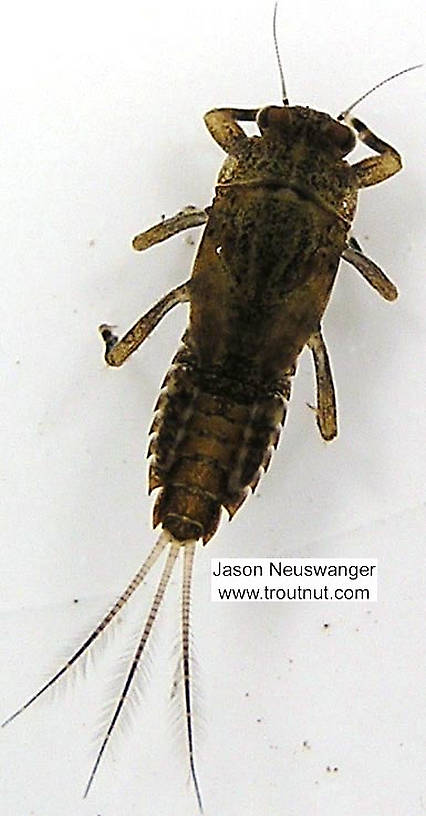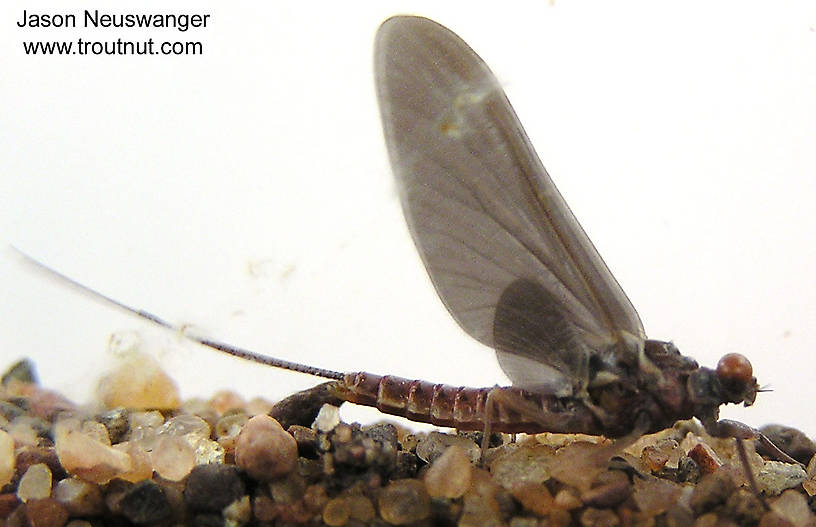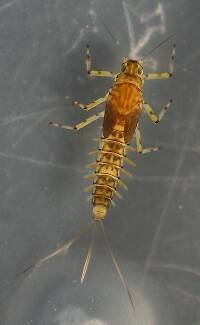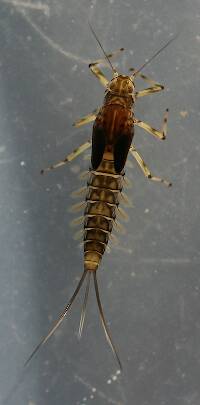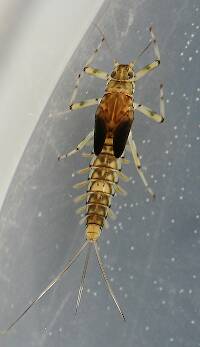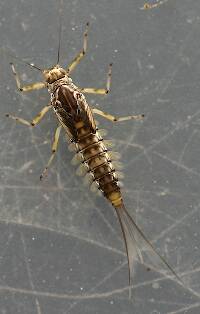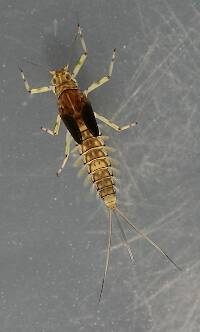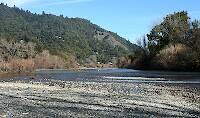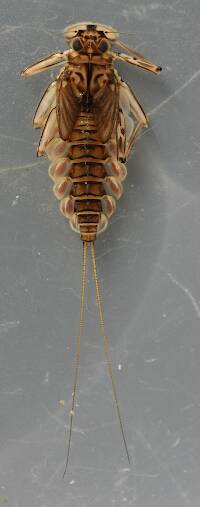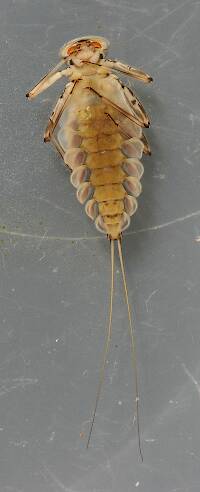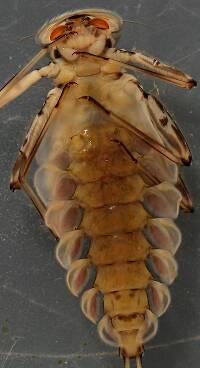
Hex Mayflies
Hexagenia limbata
The famous nocturnal Hex hatch of the Midwest (and a few other lucky locations) stirs to the surface mythically large brown trout that only touch streamers for the rest of the year.
Featured on the forum

As far as I can tell, this species has only previously been reported from one site in Oregon along the Columbia gorge. However, the key characteristics are fairly unmistakable in all except for one minor detail:
— 4 small yellow spots on frons visible in photos
— Narrow occipital spinule row curves forward (but doesn’t quite meet on stem of ecdysial suture, as it's supposed to in this species)
— Short spinules on anterior margin of front legs
— Short rposterior row of blunt spinules on abdominal tergae, rather than elongated spinules dorsally
I caught several of these mature nymphs in the fishless, tiny headwaters of a creek high in the Wenatchee Mountains.
— 4 small yellow spots on frons visible in photos
— Narrow occipital spinule row curves forward (but doesn’t quite meet on stem of ecdysial suture, as it's supposed to in this species)
— Short spinules on anterior margin of front legs
— Short rposterior row of blunt spinules on abdominal tergae, rather than elongated spinules dorsally
I caught several of these mature nymphs in the fishless, tiny headwaters of a creek high in the Wenatchee Mountains.

Troutnut is a project started in 2003 by salmonid ecologist Jason "Troutnut" Neuswanger to help anglers and
fly tyers unabashedly embrace the entomological side of the sport. Learn more about Troutnut or
support the project for an enhanced experience here.
This topic is about the Mayfly Species Ephemerella subvaria
The Hendrickson hatch is almost synonymous with fly fishing in America. It has been romanticized by our finest writers, enshrined on an untouchable pedestal next to Theodore Gordon, bamboo, and the Beaverkill.The fame is well-deserved. Ephemerella subvaria is a prolific species which drives trout to gorge themselves. Its subtleties demand the best of us as anglers, and meeting the challenge pays off handsomely in bent graphite and screaming reels.
Example specimens
Martinlf on Dec 26, 2006December 26th, 2006, 9:34 am EST
Jason, thanks for the underwater photos of subvaria nymphs and the stillborn dun. Anyone looking at this thread may have to search for them a bit, (click on "There are 29 more specimens") but they are well worth the viewing! They have given me a better understanding of how to modify my upside down mayfly tie to better represent still born and crippled subvarias, and the underwater nymph pictures have confirmed my thoughts about coloration on flies designed to imitate subvaria nymphs. The photos are phenomenal, not like any bug photos I've seen before, in that they show the insects in a natural habitat.
"He spread them a yard and a half. 'And every one that got away is this big.'"
--Fred Chappell
--Fred Chappell
Troutnut on Dec 27, 2006December 27th, 2006, 4:25 pm EST
Thanks. :) Hopefully I'll get many more like that this coming spring! It's dreadfully cold on my hands, but I think I found some streams this past summer that will make it worthwhile early in the spring when most nymphs are still out and about.
Jason Neuswanger, Ph.D.
Troutnut and salmonid ecologist
Troutnut and salmonid ecologist
Martinlf on Dec 28, 2006December 28th, 2006, 1:10 am EST
Welcome back, Jason. Hope you had a good holiday so far, and best wishes for a Happy New Year. For others interested in making Gonzo's Tyvek nymphs, I came up with an idea that may be helpful. I've made a color chart on tyvek using all the markers I have on hand, and numbered each square of color. I'm going to fold it up in my vest and take it on bug collecting trips. When I've seined one of the little buggers (May--not Wooly), he (or she) goes onto the chart for a color match. I'll then be able to jot down the number, stream name, and his (or her) species for a better color match at the vise.
"He spread them a yard and a half. 'And every one that got away is this big.'"
--Fred Chappell
--Fred Chappell
GONZO on Dec 28, 2006December 28th, 2006, 8:30 am EST
Louis,
I just wanted to mention that despite the vast array of colored art-markers that are now available (especially if you check art supply or craft shops), I still have trouble finding some of the colors I need. It is possible, however, to blend or layer different colors to some degree. There is even a special marker called a "blender" that may (or may not) help to do this. I assume that this is a marker containing the colorless solvent.
I think your color chart is a good idea (kind of like Borger's color system for markers). I once made a similar chart, except it had overlapping stripes of color in a grid that allowed me to judge the effect of one marker color over others.
Jason,
I certainly second Louis with regard to your outstanding photos of nymphs in their natural environment. Per a much earlier discussion of ours, I hope you'll have a chance to try to photograph emerging caddisflies this coming season. (The ones of B. appalachia are already some of the most revealing I've ever seen.) The photos could go a long way toward resolving a debate that has been modestly raging for more than twenty years!
I just wanted to mention that despite the vast array of colored art-markers that are now available (especially if you check art supply or craft shops), I still have trouble finding some of the colors I need. It is possible, however, to blend or layer different colors to some degree. There is even a special marker called a "blender" that may (or may not) help to do this. I assume that this is a marker containing the colorless solvent.
I think your color chart is a good idea (kind of like Borger's color system for markers). I once made a similar chart, except it had overlapping stripes of color in a grid that allowed me to judge the effect of one marker color over others.
Jason,
I certainly second Louis with regard to your outstanding photos of nymphs in their natural environment. Per a much earlier discussion of ours, I hope you'll have a chance to try to photograph emerging caddisflies this coming season. (The ones of B. appalachia are already some of the most revealing I've ever seen.) The photos could go a long way toward resolving a debate that has been modestly raging for more than twenty years!
PeterO
Posts: 8
Posts: 8
PeterO on Apr 21, 2007April 21st, 2007, 2:53 am EDT
Jason-
Be very careful putting species names on your Ephemerella nymphs. To see the characters needed for determination requires a microscope, and even then I've had late instar specimens that I couldn't identify.
Be very careful putting species names on your Ephemerella nymphs. To see the characters needed for determination requires a microscope, and even then I've had late instar specimens that I couldn't identify.
Quick Reply
Related Discussions
Topic
Replies
Last Reply
2
May 19, 2007
by Troutnut
by Troutnut
Re: Differentiation b/t Gomphidae and Cordulegastridae
In the Insect Order Odonata-Anisoptera by DMM
In the Insect Order Odonata-Anisoptera by DMM
1
Nov 29, 2006
by Troutnut
by Troutnut
1
May 5, 2009
by GONZO
by GONZO
4
Jun 5, 2007
by Wiflyfisher
by Wiflyfisher

